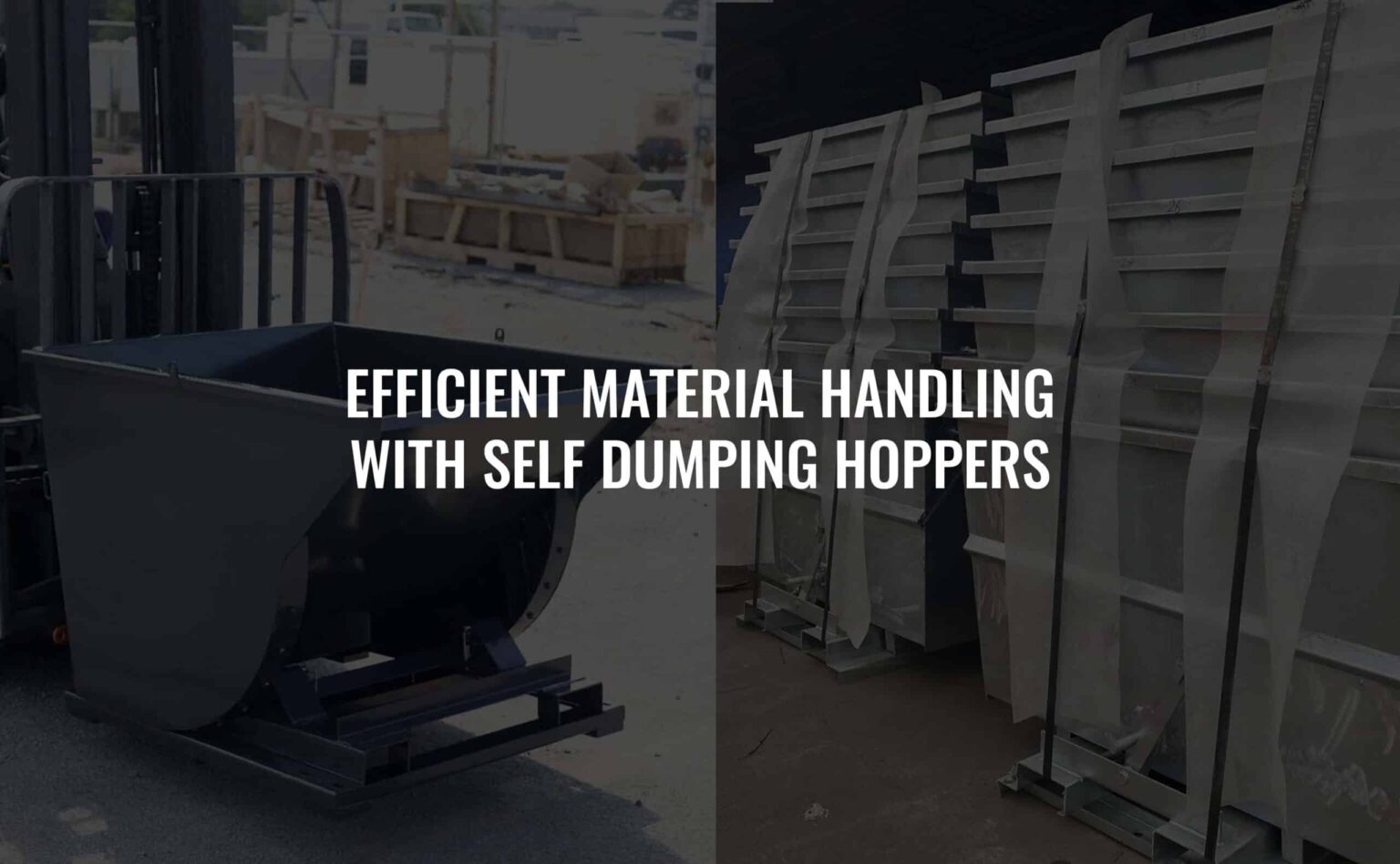In Hawaii, where material handling is a crucial part of many industries, finding ways to work more efficiently and safely is key. Self-dumping hoppers are innovative tools that offer significant advantages for businesses in construction, manufacturing, agriculture, and waste management. This guide highlights their design, benefits, and applications, focusing on 1 and 2.5 cubic yard hopper sizes ideal for local needs.

Self-Dumping Hoppers Explained
Self-dumping hoppers are designed for easy and safe material management. Made mostly of durable steel, these containers automatically empty their contents when activated, removing the need for manual handling.

How To Use Self Dumping Hoppers
- Load the Hopper: Manually or using machinery like forklifts or front loaders, fill the hopper with materials.
- Transport the Hopper: Secure the loaded hopper to a forklift, crane, or compatible lifting device and transport it to the unloading area.
- Engage the Release Mechanism: Safely operate the hopper’s release mechanism, usually a lever or cable, from the forklift or crane to avoid standing close to the load.
- Unload the Contents: By activating the release, tilt the hopper forward to dump its contents, ensuring the unloading area is free of personnel and obstacles.
- Return Hopper to Upright Position: Manually reset the hopper to its upright position if it does not automatically do so after unloading.
- Perform Regular Maintenance: Regularly check the hopper for wear, damage, or any malfunction. This includes checking the release mechanism and ensuring the hopper is clean and free from leftover materials.
Key Benefits
- Efficiency: Streamlines loading and unloading, allowing a single operator to do the work of many, saving time and labor costs.
- Safety: Automated dumping reduces injury risks, keeping operators safe from hazards.
- Versatility: Suitable for a wide range of materials and compatible with equipment like forklifts and cranes.
Types and Uses
Self-dumping hoppers are available in various models to suit different tasks. Standard hoppers handle a variety of materials, while low-profile designs are made for spaces with height restrictions. They’re invaluable for efficiently moving debris on construction sites, managing waste in manufacturing, distributing feed in agriculture, and sorting recyclables in waste management.
Choosing and Maintaining Your Hopper
Selecting the right hopper depends on the material type, volume, and the operational setting. Regular maintenance and proper operator training are essential for safety and longevity.
Why Choose Self-Dumping Hoppers?
Compared to manual handling or fixed containers, self-dumping hoppers offer unmatched efficiency and safety. They’re adaptable, labor-saving, and suitable for a range of industries.
Self-dumping hoppers are a smart choice for enhancing material handling processes in Hawaii. They provide a practical, efficient solution for businesses looking to improve safety and workflow. For those interested in adopting this technology, professional advice and quality solutions are available, tailored to your specific requirements.

